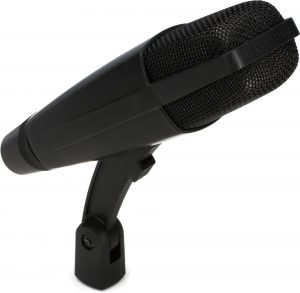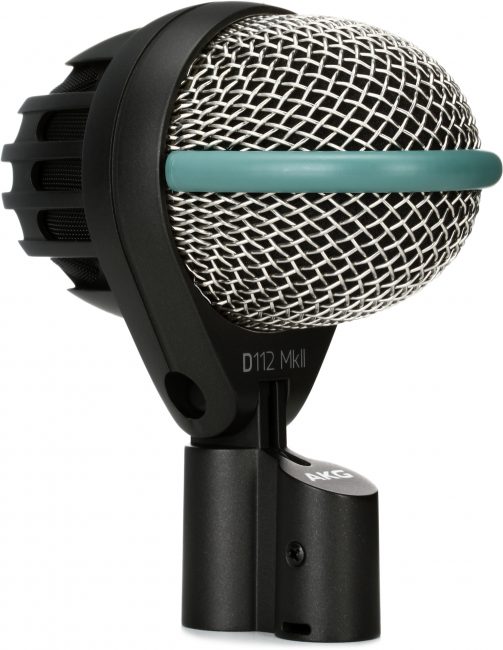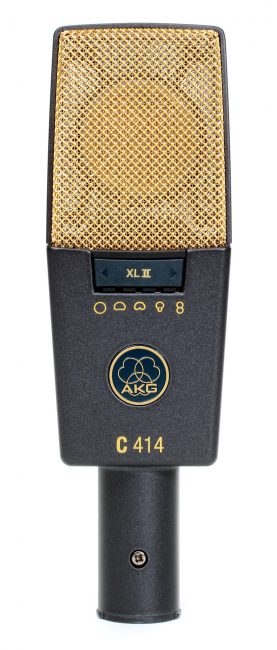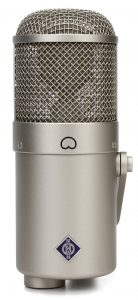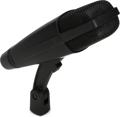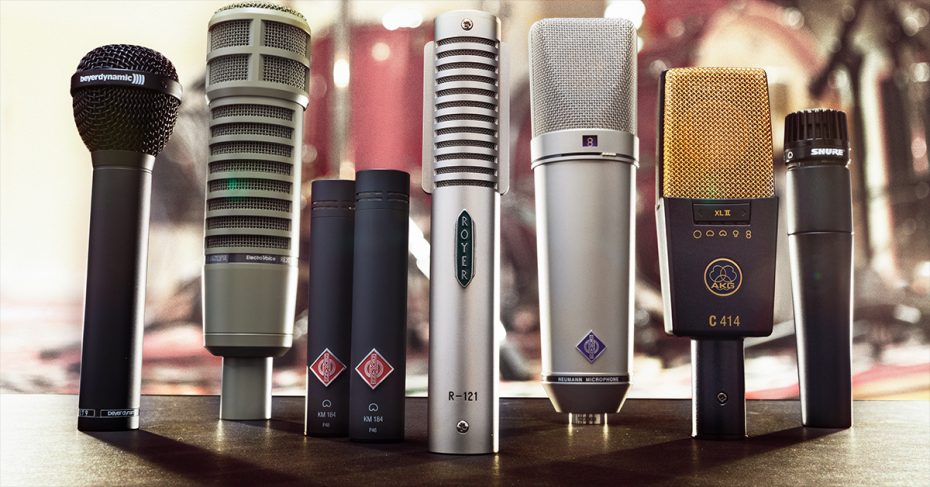
By the dawn of the 1980s, the Golden Age of Analog was in full bloom. The majestic-sounding Neve 8078, representing the pinnacle of handwired large-format console design, was a fixture in world-class control rooms. Solid State Logic’s SL 4000 E Series boards were shaking up the industry with their productivity-boosting in-line design, per-channel dynamics, punchy Bus Compressor, and Total Recall automation. The new FET condenser mics had acclimated the music business to stunning new levels of accuracy. Studer’s mighty A800 24-track tape machine had elevated analog recording to a degree of perfection never before heard, while space-race-inspired SMPTE code allowed two of them to be synced together for 46 recordable tracks. And early digital reverb rack units like the EMT 250 and Lexicon Model 224 were taking their place alongside huge electromechanical plates and live chambers. Notwithstanding the mechanized feel seeping into popular music courtesy of digital drum machines, these were a precious few years: analog had reached its zenith, and still-crude, nascent digital technology had yet to encroach wholesale on the industry.
In this series of articles, we’ll take a deep dive into the professional recording techniques and equipment that produced countless iconic recordings in the “Golden Age of Analog” (which we’ll define roughly as mid-1970s to mid-’80s) — and how you can apply these concepts today to achieve punchy vintage-flavored sonics in your multi-mic studio recordings. First up: the microphones.
Going for a Vintage Sound
If you’re going for a vintage sound, a good place to start is with your choice of microphones. The thing to know is that, back in the Golden Age of Analog, we didn’t have a plethora of great-sounding, affordable mics to choose from like we do now. By today’s standards, the selection was rather limited. And if you wanted to outfit a professional recording studio’s mic locker, you had to be prepared to spend a small fortune, as inexpensive, high-quality condenser mics did not exist.
Another category that didn’t exist was purpose-built microphones like those we have today. The closest thing we had to a “kick-drum mic” was the AKG D12E, which favored the low end but invariably sounded way too thick with too much mid-bass and not enough presence — like a brick dropped into a bowl of pudding. You could employ an equalizer to suck out 400Hz and add a ton of 8k (boosting hiss along with it) in an attempt to capture the beater impact; or you could use a Sennheiser MD 421, which was, natively, more adept at punching through fat rock tracks. Legendary engineer Bob Clearmountain loved 421s and would use no other tom mic. And yes, the 421, first introduced by Sennheiser in 1960, is still going strong — the MD 421-II is a best seller at Sweetwater. So is the Shure SM57. Since the late ’60s, the 57 has been an industry-standard, studio and stage snare-drum and guitar-amp mic, and it remains so today. Other dynamic mics, such as the Sennheiser MD 441, the Electro-Voice RE20, and the Beyerdynamic M 88, also found their way into top studios’ mic lockers, but the 57 and 421 were the go-to workhorses.
If the 57 and 421 dominated the pro dynamic-microphone market of the 1970s, the large-diaphragm condenser (LDC) category was headlined by the Neumann U87 and the AKG C414EB. These were both FET designs that had replaced the tube U67 and C12 in their respective manufacturers’ lineups. Of course, world-class studios still had their prized collections of esoteric tube mics such as Neuman’s U67, U47, and M 49; AKG’s C12; and the mellifluous Telefunken ELA M 251; but, as marvelously euphonic as they sounded, these older, less versatile designs were more delicate and maintenance-intensive than their new solid-state counterparts. Neumann had also replaced the U47 with the U 47 FET, but its solid-state caricature of the bold tube U47 sound left it relegated it to specific tasks — engineers quickly discovered it made an outstanding (auxiliary) kick-drum mic. An interesting fact is that there are more tube and ribbon mics in use today than there were in pro studios in the 1970s, when they were no longer being made and were (shockingly) considered passé! Ironic, we know.
The most popular small-diaphragm condenser mics — the KM 84 and C 451 — were also made by Neumann and AKG. In the ’70s, the only ribbon mics in circulation were discontinued RCA designs. Easily damaged by high SPLs and blasts of air, these delicate vintage mics couldn’t be used on electric guitar amps and drums like today’s robust ribbon mics. So, the lion’s share of classic records from this era were made with a relatively small selection of microphone models. Let’s take a look at the modern-day equivalents you might use to get you close to that vintage sound. We’ll start with the drum kit.
Drum Mics
On bass drum, you can’t go wrong with either the Sennheiser MD 421-II or the AKG D112 MKII, a modern version of the classic D12, optimized for kick-drum duties with a built-in EQ curve that yields excellent punch and attack. The Shure Beta 52A is another excellent purpose-built mic with a frequency response tailored for kick drum and other bass instruments. For snare drum, go with a Shure SM57 — still the most popular snare mic on the planet. If you want to mic the snares, use another 57 underneath and be sure to invert the polarity. For the hi-hat, we’d recommend an AKG C 451 B aimed down toward the bell. You could also use a 57 in a pinch.
The Sennheiser 421-II works great for punchy toms that sit well in the track. You’ll get a bigger sound (and more leakage) from 87s or 414s — which might be perfect for ballads, although huge toms are harder to place in a thick rock arrangement. If multiple 421s are not in your budget, then the Sennheiser e604 will get you close. It’s punchy like a 421, and it comes with its own rim mount, so you don’t have to use it with a mic stand. It also works well on snare and electric guitar. For overheads, the AKG C414 XLII can’t be beat. A well-placed pair of them will give you an open, airy stereo image of the drum set and cymbals that aren’t too “pingy” and that fit nicely in the context of the overall kit. To achieve a more aggressive “clang factor” that cuts through hard rock and metal, two Neumann U 87 Ai condensers will do the trick.
For overhead- and room-mic duties, you might also consider the superbly warm and smooth Royer SF-12, a stereo mic with two matched figure-8 ribbon elements placed one above the other at a fixed 90-degree angle. This setup allows for Blumlein and M-S recording with one mic, with monaural compatibility when summing left and right to mono. For a harder-edged room sound, go for a pair of 87s. If your wish list is starting to outgrow your budget, it’s good to know that today’s market is rich with excellent large-diaphragm condenser mics — both solid-state and tube, and in all price ranges — that will perform admirably.
It’s All About the Bass
Let’s move on to bass. If it’s the electric variety, take it direct. Even if you’re going to mic a bass amp, the direct signal will likely supply the meat of your bass sound. Using an Electro-Voice RE20, a 421, or even a 57 on a bass cabinet can deliver the added grind you need, depending on what you’re going for. Neumann’s U 47 FET is a first-call mic for upright bass, although there are quite a few other condensers, such as the Neumann KM 184 — and even some active ribbons — that will work great. Smoother and decidedly less aggressive than an 87 or an FET 47, the KM 184, it should be mentioned, is a fabulous mic for just about any acoustic instrument.
Guitars, Piano, and Sweetening
For electric guitar cabs, use a 57 up close. You can add a 421 for more “buzz” and/or a Royer R-121 ribbon mic for a smoother sound and supplement the close mics with an 87 (or other LDC of your choice) further out into the room for some air and dimension. Experiment with placement — moving a mic just a few inches can make a big difference. For acoustic guitars, small-diaphragm condensers tend to work best. The AKG C 451 B is famously adept at capturing record-ready acoustic guitars. Aim it down and in toward the 12th fret, and you’re ready to rock. For grand piano, use a pair of 87s — or any LDC that strikes your fancy. The 87 also works great for strings and brass (although, if you’re being eclectic about it, you may want to consider ribbon mics or dynamics like the Beyerdynamic M 88 TG or the Sennheiser MD 441U for ensemble or solo brass instruments). Percussion is a varied category, but we can tell you that the 421 sounds great on congas, and the 87 works well for timpani as well as for orchestra bells, shakers, tambourines, and other high-pitched percussion.
A Serviceable Mic Locker
We’ve noted that many legendary recordings were made with just a few mic models. If you walked into a session at New York’s legendary Record Plant or Hit Factory studios in the mid-’70s, you’d see a forest of 87s, 421s, and 57s — with perhaps a few 414s, 451s, FET 47s, KM 84s, and possibly an RE20 or two strategically deployed for good measure. So, can you get great results with just the modern-day versions of these classic mics? Absolutely — and that’s the point. While we’re not necessarily advocating placing restrictions on your microphone selections, narrowing your choices does eliminate option anxiety. Paradoxically, the discipline can be liberating, freeing you from minutiae and letting you get on with the creative process. And eliminating exotic tube condensers and ribbons from consideration will certainly trim your expenditure. Bottom line? You don’t need a massive mic locker. You need a serviceable one — and a basic mastery of the mic techniques that will allow you to get the most out of what you have.
So, that about wraps it up for this installment. Hopefully, by now you have some ideas on which mics will best suit your needs while accommodating your budget. Next steps? Browse our huge selection of microphones here at Sweetwater.com, or give us a call at (800) 222-4700. Your Sweetwater Sales Engineer will be happy to offer friendly, expert advice on building the mic locker of your dreams!



